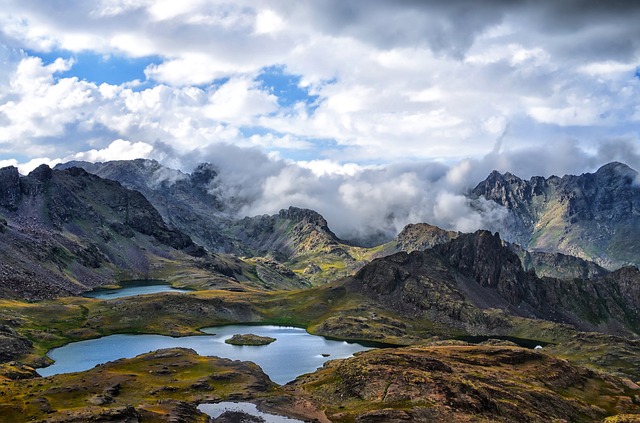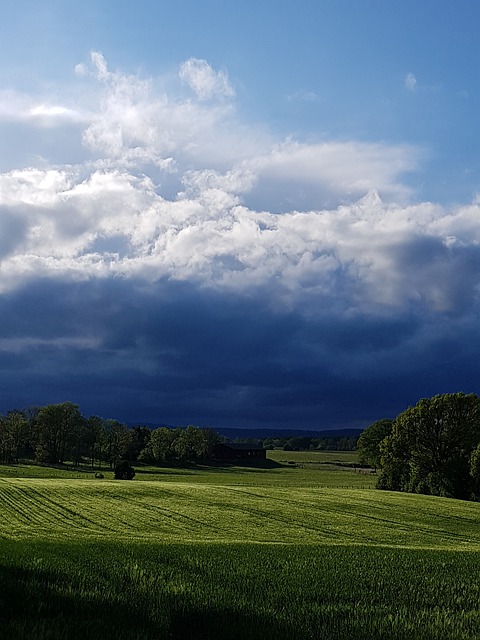Youíve likely heard how important it is to check the weather forecast before heading out on a hike or expedition. The seasons are changing, but regardless ofÖ Read more "WEATHER PREDICITON"
Youíve likely heard how important it is to check the weather forecast before heading out on a hike or expedition. The seasons are changing, but regardless of the season itís important to check the forecast. This allows you to pack your backpack with knowledge of what you might need, as well as any other gear you med need, and ultimately makes for a better escape to the wilderness. If we donít pay or fail to pay attention to weather conditions it can also present safety concerns. Youíve checked the weather forecast, but do you want to learn how you can predict the weather while you hike? Keep on reading!
The daily weather patterns
One of the basic rules of weather is this; The weather has a default behaviour and itís likely to continue in a daily pattern. This means that what happened yesterday is likely to happen today. The pattern changes only when the weather gets new influence occurs to break the pattern. Another useful rule is that weather is usually most volatile in the afternoon. During the night and in the mornings the weather is more likely to be calm. When the sun is shining, raysí heats Earthís surface during the day. This will result in temperature difference between land and air, and you can witness some quite dramatic scenes by afternoon such as a thunderstorm.
Weather influencers
I have mention that the weather pattern changes when some new influence occurs.† One of this influence can be changes in atmospheric pressure. This is also called barometric pressure, and this measure the force exerted by the weight of air above you. This pressure varies greatly with weather. High pressure means that air is weighing down, more than normal, and this is a sign of stability. Low pressure means that air is moving upwards, which means that the air is lighter than normal. Low pressure is often a sign of shifting weather. Many of us hikers have watches that can measure atmospheric pressure, but there is still signs to look for if you donít have this equipment. Itís impossible to feel changes in pressure yourself, but you can measure it by making a fire and look how the smoke reacts. If the smoke rises high in a ęstraightĽ line, you are more likely to be in a location with low pressure, which indicate a weather change. If the smoke moves to the sides and keeps low, you most likely in a area with high pressure. If you donít have a fire or smoke to watch, you can actually use the clouds.
Different type of Clouds

Clouds are an indispensable weather indicator. They can be difficult to read, and you will need some practise due to the cloudís complexity. With enough training and experienced observation, clouds can tell you detailed information about the weather. You have to watch the type of clouds, their altitude, and the difference in cloud layers. Itís possible to assign cloud forms into a classification system, where shape, size and altitude define their characteristics. Meteorologist has divided in to three most basic types. Cirrus clouds are streaky white clouds at high altitude. These clouds are hard to observe, but if you can see the clouds, and if they form a halo of light visible around the sun, a change in weather can occur.
Stratus clouds are low to mid altitude clouds that are highly variable in form. They often tend to make layers, and if you are watching the clouds, animals or other object can occurs if you use your imagination. These clouds may be puffy clouds, which are white or grey. Some of these clouds can indicate rain, but if the clouds are white, and you can see the sun through them, rain is probably not imminent. When Stratos clouds turn grey, they build up in layers. You can see them form in different layers and these clouds will most likely produce rain.

The last type of clouds I want to mention is the Cumulus clouds. These are your standard white, puffy clouds that form at low altitude. These clouds can build up with other clouds and you can notice them darkening, and see them form tall and dark. Low pressure can cause cumulus clouds to build into stormy cumulonimbus clouds or thunderheads. When you are observing the clouds, you will notice that some of them moves fast, and some are slow. This depends on the wind, which also can help you predict the weather.
Wind
The movement of air around the earth is referred to wind. The movement of air from high pressure to low pressure is what brings about winds. The direction given for the wind refers to the direction from which it comes. At different locations wind use to occurs the same in a pattern. This is called prevailing wind. If you notice that the wind is changing from where it usually blows, this indicates a change in the weather. If you hike in a new forest or mountain, check the wind regularly and pay attention if It changes. Remember that the wind always will blow from high pressure, stabile weather, to low pressure, unstable weather.












